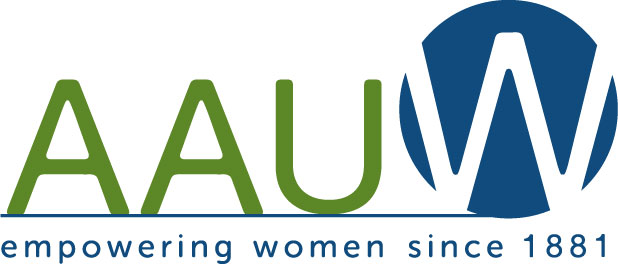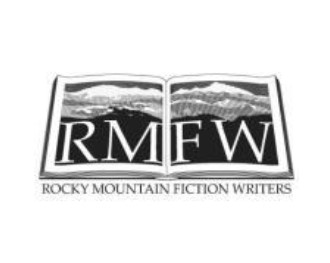At a time when archaeology was entirely wrapped up in haphazard
artifact collecting under the banner of antiquarianism, Thomas Jefferson blazed
a trail that would contribute to the transformation of treasure hunting
antiquarianism into the science of archaeology. Through his curiosity and
subsequent research, Jefferson posited a hypothesis, applied methodical digging
techniques, provided qualitative and quantitative data, and published his
conclusions in spite of current historical climates. A century ahead of its
time, Jefferson’s research provided a foundational block for future archaeological
research methods as well as marked the beginning of understanding ancient
Native American culture and histories at the risk of his own reputation.
As with any discipline, archaeology, too, was subject to
the evolution of research and acquisition methods of its infancy. Prior to
becoming its own field of study under the wide reaching umbrella of
anthropology in the late 19
th century with globally recognized and
respected methods of recovery and field work it had fallen under the scope of
antiquarianism. The 18
th century brought with it a shift in
individual focus from the heavens to humanism,
sparking interest in not only the academics of the era to investigate
humanity’s ancient past, but the leisurely gentlemen of the time as well.
Antiquarianism became a hobbyist’s profession in which he studied history and
searched for the relics of the past to further his understanding of where his
ancestors came from. Many of these individuals “were wealthy adventurers,
explorers, and merchants.”
The
methods at the time compare dimly to that of today, where, in most cases, a
complete disregard for the cultures and countries in which artifacts were
located and rightfully belonged were extracted to distant lands and installed
in museums
or
sold to private, wealthy collectors. This commonly occurred during war under
the guise of protecting beautiful monuments by removing them from potentially
targeted cities such as was evident in the Napoleonic Wars and the collection
of “hundreds of tons of Egyptian artifacts.”
During
this era, antiquarians collected artifacts without documenting where they came
from, the environment they were rediscovered in, or any other observable facts
before removing them. This was detrimental to the cultural and historic aspect
of the artifact as it denied any context for it, leaving it disenfranchised
from its origin. Private sales of collected artifacts has remained a practice
into the current century,
although by now it truly is considered looting and tomb raiding. Today, the
retrospective view of antiquarianism is gradually shifting from one less of
condemnation of grave robbing opportunists to one of deeper understanding of
the processes behind the birth of new scientific disciplines. The original
narrative that antiquarians “were in essence amateurs and dilettantes”
now being seen as “one designed to stress the scientific credentials of the
disciplines that grew out and away from antiquarianism,”
some of which include history, anthropology, and archaeology.
During this age of arbitrary excavation, one particular
amateur archaeologist stands out among the rest. Thomas Jefferson, Founding
Father and third president of the United States, had an entirely different
approach to antiquarianism; one of method and strategy, established
documentation, and conclusive hypothesis. His notes and suppositions were
recorded in his book,
Notes on the State
of Virginia, published in 1787. This book was in answer to a survey posited
by Francois Marbois, the secretary of the French legation in Philadelphia in
1780.
Part of the survey requested information about the histories and populations of
Native American tribes of the state of Virginia and Jefferson did not hesitate
in his response. Instead, he dedicated an entire 20 page chapter to the
relationships, histories, census, and composition of Virginian Native American
peoples in addition to his description of what he concluded was a Native
American burial mound located in the neighborhood of his home in Monticello.
His main goal of the excavation was to rediscover the cultural aspects of the
burial mound, specifically on how it was built and for what purpose. Jefferson
continued to outline the different mounds in the locality of his home and the
speculation surrounding their development. “These are of different sizes, some
of them constructed of earth, and some of loose stones.”
The
mainstream supposition assumed that these mounds marked the locations of
ancient town sites since they were most typically located in Jefferson’s modern
time “in the softest and most fertile meadow-grounds on river sides.”
The theory of the development of the mounds in these ancients towns included
the tradition of “the first person who died was placed erect, and earth put
about him, so as to cover and support him…”
then, when another individual died, they stacked that corpse on top of the
previous and built up the dirt around it, continuing onward until the mounds
became the large structures that they were.
Unsatisfied with these assumptions and uneducated hypotheses, Jefferson set out
to discover the true answer himself through calculated, thorough excavation.
Jefferson’s findings had a profound impact on the future
disciplines of anthropology and archaeology because he documented what he
observed. At a time when searching for material value or treasure was at the
forefront of most antiquarian’s minds, Jefferson was more interested in the discovery
of the truth about what he was investigating. The knowledge borne from the
excavation of the mounds was where the wealth was hidden for him and he donated
that wealth to the rest of the world through the publication of his book. The
last pages of the chapter described what the mounds looked like from the
outside prior to excavation stating, “It was of a spheriodical [sic] form, of
about 40 feet diameter at the base, and had been of about twelve feet
altitude…”
He explains his methods
of entry to the mound, “I first dug superficially in several parts of it, and
came to collections of human bones, at different depths, from six inches to
three feet below the surface.”
He discovered in these bones that they were not solely standing erect as once
thought, but rather mixed in their configuration to include vertical,
horizontal and “entangled.”
From this disarray of bones he posited that they were arbitrarily placed into
the area as if they were “emptied promiscuously from a bag or blanket”
and then promptly covered by dirt. Jefferson describes the condition of the
bones and their brittleness, the types of bones present as well as their sizes
and color. “This bone was white, all the others of a sand color. The bones of
infants being soft, they probably decay sooner, which might be the cause so few
were found here.”
He
excavated the mound further and documented the stratigraphy of the mound as
well as the layers in which each artifact or ecofact was located, a shockingly
modern scientific consideration developed by James Hutton, the Father of Modern
Geology, in the same era the excavation was taking place.
Jefferson was able to conclude from this study of the strata that the mounds
were developed by placing the first collection of bones of the multiple
deceased on the main level of earth, then covering them first with stones
followed by dirt, then repeating this process by depositing a second collection
of bones and covering them with stones and earth, continuing on until the mound
grew to the size it currently was.
The discovery of children’s bones was a startlingly new
development to the contrary of other uneducated guesses of the purpose of the
mounds acting as a burial ground strictly for warriors.
His excavation quickly dispelled many of the common threads of belief within
his colonial community, yet, he took it one step further to examine the myths
of European and, even, Asian peoples landing in North America prior to its
official occupation by European settlers in the late fifteenth century and
beyond. Jefferson addresses these conjectures in his report to the French
secretary, by recounting the history of possible accidental arrivals from
European Nations. While the current society of the time believed that the
burial mounds were the remnants of “Israelites, Phoenicians, or Vikings”
Jefferson stood strong in his conclusion that the mounds belonged to the native
peoples of the area. “I know of no such thing existing as an Indian monument…
that they were repositories of the dead, has been obvious to all: but on what
particular occasion constructed, was a matter of doubt.”
Jefferson
supports his theory that the local or original tribes to the area were the
creators of the mounds by recounting a time in which he observed a traveling
band of Native Americans approach the particular mound under excavation thirty
years prior. The tribe “went through the woods directly to it, without any
instructions or enquiry, and having staid [sic] about it some time [sic], with
expressions which were construed to be those of sorrow, they returned to the
high road…”
He attributes the
existence of the children’s bones for their mourning and makes note of other
mounds in the area which had experienced similar interactions with native
peoples. Through the analysis of the existing languages in Asia compared to
current Native American tribes Jefferson further predicts that Native American
populations were the descendants of ancient Asian peoples. This conclusion allowed
Jefferson to extrapolate that since there are no recognizable similarities
between the two modern languages between Asia and North America that the
ancestors of current Native Americans could potentially have been similar to
that of “the age of the earth.”
This cutting-edge idea of linguistic comparison was concluded with his final
statement on the topic, “A greater number of those radical changes of language
have taken place among the red men of America, proves them of greater antiquity
than those of Asia.”
The
modern theories of how the Americas were originally populated offer some
support for Jefferson’s remarkably well predicted hypotheses.
Jefferson’s approach to the burial mound was inspired by
a respectful curiosity coupled with the determination to acquire the truth
about its origin and creators. Through systematic excavation and unprecedented
documentation, Jefferson laid the groundwork for American archaeology earning
him one more field in which he was labeled a Founding Father. The idea that
Native Americans were not only capable of monumental architecture, but also
ancient occupants of North America was incendiary at the time when racism and
the systematic assimilation and acculturation of native peoples was the
dominant social perspective and mission. Jefferson’s conclusions would not
truly find a serious audience until nearly 100 years later when ethnologist
Cyrus Thomas came to the same understanding of the mounds and published
thorough, more modernly scientific data on the subject.
Bibliography
- "Archaeology."
National Geographic Society. October 09, 2012. Accessed April 17, 2019. https://www.nationalgeographic.org/encyclopedia/archaeology/.
- Clark, Robert.
"How Tomb Raiders Are Stealing Our History." National Geographic. May
13, 2016. Accessed April 18, 2019. https://www.nationalgeographic.com/magazine/2016/06/looting-ancient-blood-antiquities/.
- Colavito, Jason. "Jefferson's
Excavation." Jason Colavito. Accessed March 29, 2019. http://www.jasoncolavito.com/jeffersons-excavation.html.
- "James
Hutton: The Founder of Modern Geology | AMNH." American Museum of Natural
History. Accessed April 19, 2019. https://www.amnh.org/learn-teach/curriculum-collections/earth-inside-and-out/james-hutton.
- Jefferson,
Thomas. Notes on the State of Virginia. Boston, MA: David Carlisle,
1801.
- Momigliano,
Arnaldo. "Ancient History and the Antiquarian." Journal of
the Warburg and Courtauld Institutes 13, no. 3/4 (1950): 285-315.
doi:10.2307/750215.
- "Jefferson's
Excavation of an Indian Burial Mound." Monticello. Accessed April 18,
2019. https://www.monticello.org/site/research-and-collections/jeffersons-excavation-indian-burial-mound.
- Murray,
Tim. "Rethinking Antiquarianism." Accessed April 17, 2019. http://dx.doi.org/10.5334.bha.17203.














